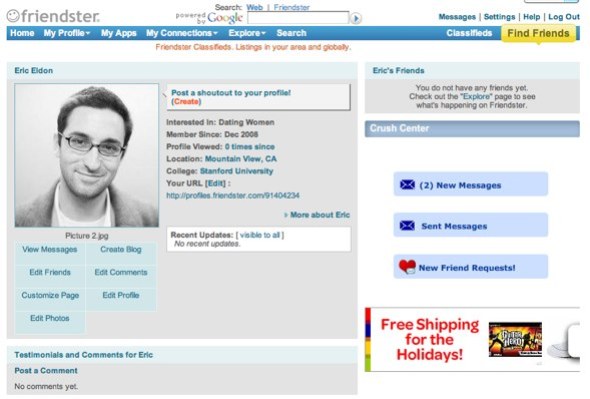
The patent in question concerns the “compatibility scoring of users in a social network,” or a method for determining how similar social-network users are to each other (abstract below). San Francisco-based Friendster has apparently been granted these patents because it grew big before major rivals and offered many standard social networking features before them too. The previous three patents cover: how people are connected on a social network, the process of friends encouraging each other to upload content, and ways for users to manage social-network friendships.
[aditude-amp id="flyingcarpet" targeting='{"env":"staging","page_type":"article","post_id":101275,"post_type":"story","post_chan":"none","tags":null,"ai":false,"category":"none","all_categories":"business,","session":"B"}']In other words, these patents are extremely broad. Could Friendster really demand payment from MySpace and Facebook whenever users add friends? So far, the company hasn’t — and it’s not divulging its future legal strategy. Note: These days, patent courts appear to be taking a harsher stand on patents that don’t rely on original technology. It’s not clear how Friendster’s growing portfolio might be affected. That’s something for the law to figure out.
Here’s the “compatibility” patent abstract:
AI Weekly
The must-read newsletter for AI and Big Data industry written by Khari Johnson, Kyle Wiggers, and Seth Colaner.
Included with VentureBeat Insider and VentureBeat VIP memberships.
The compatibility score of individuals in a social network is computed based on the compatibility of interests expressed by these individuals. The compatibility score between any two interests is calculated as the log of the estimated probability that a member of the social network will express both interests as his or her interests divided by the product of: (i) the estimated probability that a member of the social network will express the first of the two interests as his or her interest and (ii) the estimated probability that a member of the social network will express the second of the two interests as his or her interest. The compatibility score between two individuals is calculated as the sum of the compatibility scores between each interest appearing in a set of interests expressed by the first of the two individuals and each interest appearing in a set of interests expressed by the second of the two individuals.
VentureBeat's mission is to be a digital town square for technical decision-makers to gain knowledge about transformative enterprise technology and transact. Learn More
